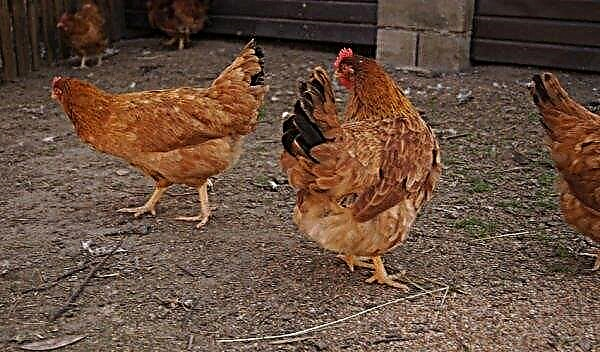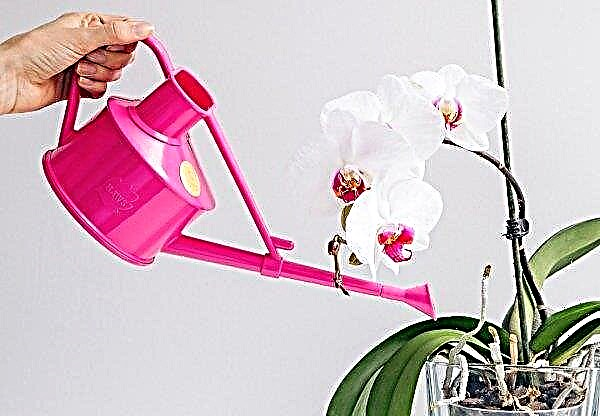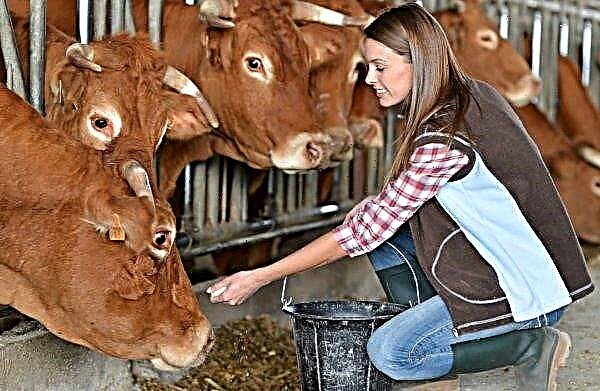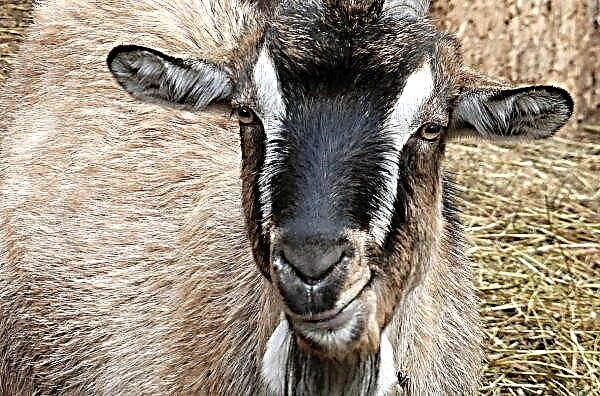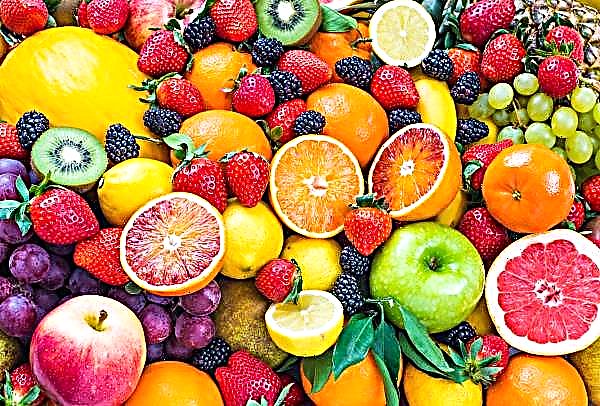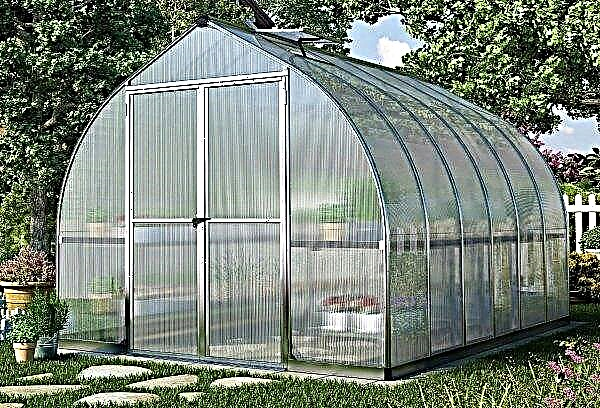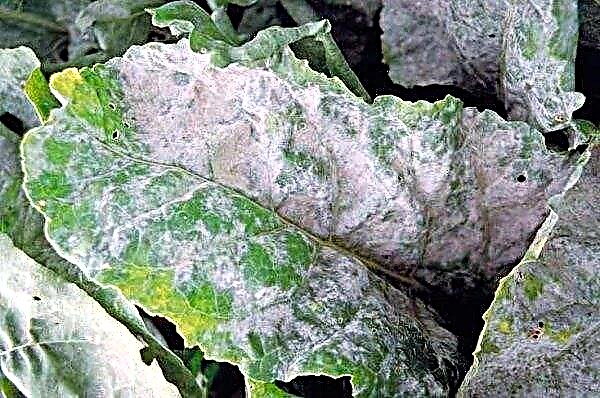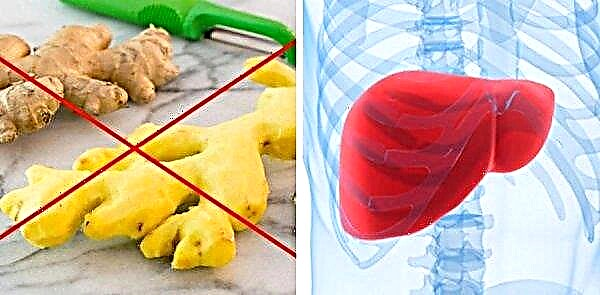Many gardeners are aware of this problem: in tomatoes planted in a greenhouse, numerous inflorescences still turn yellow together buds, and tomorrow the flowers suddenly and massively dry, and then fall off without forming ovaries. What reasons can cause such an unpleasant phenomenon, what measures should be taken to correct the current situation, and even better to prevent its occurrence - all this and much more is described in this review.
Why does the tomato color fall in the greenhouse?
There may be several reasons why the tomatoes do not bloom, and the flowers that appear dry and crumble. That is why, before taking any measures, it is important to understand what exactly caused the problem.
Important! Tomatoes, especially during the beginning of flowering, react very poorly to sudden temperature fluctuations in the daytime and at night. The fewer such differences, the more friendly the fruits will be tied on the plants.
Microclimate
In order to get a good tomato crop indoors, it is necessary to maintain the optimal conditions in the greenhouse for 4 important parameters:
- temperature;
- humidity;
- lighting;
- ventilation.

Absence or problems with pollination
Tomatoes are self-pollinated plants. This means that the pollination of each flower can be carried out by its own pollen. Also, pollen from neighboring flowers of the same or another plant can be involved for this purpose. When tomatoes grow in open ground, pollination problems usually do not occur due to the flow of air masses, as well as a whole swarm of insects that fly around the beds and, collecting nectar from the flowers, simultaneously transfer pollen from the stamens to the pestle with their paws.
Important! Anthers deform and do not crack at the right time if the temperature drops below 13 ° C. With an increase in temperature to +30 ° C, pollen loses its qualities, and with an increase of this indicator by another 5 ° C, it acquires sterility. With increasing air humidity up to 70% and above, pollen becomes heavier, sticks together and loses volatility.
However, in greenhouses, where insects and wind are absent, everything becomes much more complicated. For the pollination process, it is critically necessary that the pollen that forms in the so-called anthers is light and volatile enough, then when cracking the anther it easily crumbles right on the stigma of the pestle. Many novice farmers do not attach importance to this moment, but it is the unfavorable microclimate in the greenhouse that makes tomatoes unable to pollinate.
Poor quality seeds
Some gardeners, having grown a good tomato crop, collect seeds from such fruits and leave them for planting next year, sincerely believing that in this way they not only save on the purchase of seed material, but also guarantee a high yield result. Unfortunately, this is not really the case. The causative agents of many dangerous diseases of tomatoes, including fungi, bacteria and viruses, can accumulate not only in the soil and tops of agricultural crops removed in autumn, but also in seeds. Even if the plant looked perfectly healthy in appearance, the pathogen could already be in it. To start the manifestation of the disease, it is necessary that the number of microorganisms in the culture reaches a certain amount, but the trouble is that this can happen precisely during the subsequent storage of seeds.
The causative agents of many dangerous diseases of tomatoes, including fungi, bacteria and viruses, can accumulate not only in the soil and tops of agricultural crops removed in autumn, but also in seeds. Even if the plant looked perfectly healthy in appearance, the pathogen could already be in it. To start the manifestation of the disease, it is necessary that the number of microorganisms in the culture reaches a certain amount, but the trouble is that this can happen precisely during the subsequent storage of seeds.
Poor quality seed material can be obtained even when it is purchased, especially if it was produced from unknown sellers or if the goods were released by an unscrupulous producer. Bad seeds often manifest themselves as poor germination, but those seeds that still germinate are usually characterized by reduced viability, which, in particular, can be felt by the drying of flowers and the absence of ovaries.
Did you know? Only in the Russian Federation more than 1200 different varieties and hybrids of tomatoes are registered. Nobody considered how many of them exist in the world, all the more so since this number is increasing year by year by the efforts of breeders.
The use of seeds, which are produced by agricultural enterprises that value their reputation, will help solve the problem. Such a product is not cheap, but it guarantees friendly seedlings, healthy plants and a high yield.
Using the wrong grade
Numerous varieties of tomatoes are usually classified according to different criteria, and one of them is the recommended method of cultivation - some varieties of crops were specially bred for growing in greenhouses, while others are focused on planting in open ground. Therefore, when choosing a tomato variety or hybrid, you always need to focus not only on its productivity, keeping quality, taste and other qualities, but also on whether it is suitable for a greenhouse. It should be borne in mind, however, that the foregoing cannot be taken as dogma. For example, indeterminate varieties that are unstable to cold are traditionally used for greenhouses, however, in the southern regions of Ukraine, soil in an open bed warms up much better than in a greenhouse located in the middle zone.
It should be borne in mind, however, that the foregoing cannot be taken as dogma. For example, indeterminate varieties that are unstable to cold are traditionally used for greenhouses, however, in the southern regions of Ukraine, soil in an open bed warms up much better than in a greenhouse located in the middle zone.
The gardener should also know that, no matter how strange it sounds, many dangerous tomato diseases (such as alternariosis, macrosporioz, cladosporiosis, etc.) are more likely to affect plants planted in greenhouses than those grown in open ground. Therefore, the resistance of the variety to these diseases is a prerequisite when choosing a tomato for a greenhouse.
Did you know? In 2005, Dutch scientists (the University of Wageningen and the Research Center) conducted interesting studies. The same tomato hybrid was illuminated in 4 different ways: 12 hours, 15 hours, 18 hours with high intensity and 18 hours with lower intensity. The most impressive crop, and with a wide margin, was obtained from the group of plants that was exposed to the maximum intensity.
What should I do?
Of course, having planted poor-quality seeds or making a mistake when choosing a suitable variety, a tomato cannot completely solve the problem of drying flowers. For the most part, the crop will still be lost, and the main thing the farmer needs is to draw the right conclusions and prevent the same problem from happening again next year. But some measures can still be taken by correcting at least those points that can be adjusted.
Recovery of optimal conditions
With small amendments, depending on the variety, tomatoes need to provide such temperature indicators in the greenhouse:
| Optimal daily temperature during the period of active growth | 20–22 ° C |
| The minimum daily temperature during the period of active growth | 18–19 ° C |
| The minimum night temperature during the period of active growth | 14–16 ° C |
| Optimum daily temperature during flowering and fruiting | 26–32 ° C |
| The minimum night temperature during flowering and fruiting | 16–18 ° C |
| The critical lower temperature indicator (the point of stopping growth and stopping the formation of buds) is air | 10 ° C |
| Critical Lower Temperature Index - Soil | 13 ° C |
| Critical Upper Temperature Index - Air | 36–40 ° C |
| Critical Upper Temperature Index - Soil | 25 ° C |
No less demanding tomatoes and moisture. Good development and fruiting is ensured only if this indicator with respect to air is at the level of 65%, and in the soil is 80–85%. Tomatoes are very photophilous crops.
In the summer, in open beds, especially when it comes to the southern regions, the plant usually receives enough light and may even need some shading, however, in winter greenhouses, natural lighting for tomatoes will be clearly not enough. It is also proved that in poor lighting, only one of the 3 flowers can open, pollinate and form an ovary in a tomato.
Important! Pollinated flower is easy to recognize by bent back petals.
In order for the tomatoes to get enough light in greenhouse conditions, in addition to installing special lamps in the room, it is necessary to observe the normative indicators of planting density: between 2 adjacent bushes of determinant (undersized) tomatoes, at least 0.4 m should be left, and between the rows - 0.5 m For indeterminate varieties, 0.5–0.6 m of free space for each bush should be provided.
Such a planting density will provide the plants not only uniform illumination, but also good ventilation, however, the appropriate ventilation system (in the form of a modern hood or at least a large number of window leaves) in the greenhouse must be installed.
Pollination
In order to ensure normal pollination of tomatoes, first of all you need to bring the microclimate in the greenhouse to the recommended parameters. However, sometimes these activities are not enough. In such cases, one more option remains - artificial pollination.
Important! The number of trunks that need to be formed on a tomato bush can vary depending on the variety, but their maximum number should never exceed 3. Experienced farmers also recommend leaving no more than 8 fruit brushes on the plant.
There are several ways to do this, the choice depends on the number of plants, the size of the greenhouse and the farmer’s personal preferences:
- Fan. With the device turned on, it is necessary to bypass all the beds, creating a semblance of wind.
- Vibration. Carefully holding the bush by the trunk, shake the flower brushes. You can also slightly twitch the ropes on which the bushes are held. The main thing is to create a movement in which pollen spills out from the anthers.
- Mechanical contact. With a soft brush or a cotton swab, you need to carefully walk through each flower, transferring pollen to pistils. This method is very time consuming and at the same time the most unreliable, in addition, it often leads to damage to the peduncle.
 A few days after the measures taken, the result should be evaluated. If pollination has occurred, after some time an ovary will appear at the base of the flower - a small tomato. However, to consolidate the success immediately after pollination, experienced farmers recommend slightly increasing the humidity in the greenhouse by spraying, if necessary, each bush with spray water.
A few days after the measures taken, the result should be evaluated. If pollination has occurred, after some time an ovary will appear at the base of the flower - a small tomato. However, to consolidate the success immediately after pollination, experienced farmers recommend slightly increasing the humidity in the greenhouse by spraying, if necessary, each bush with spray water.Bush formation
A large number of buds on a tomato bush is not at all a guarantee of a good harvest. On the contrary, the increased number of ovaries creates an exorbitant load on the root system and the stem of the plant, as a result, the fruits do not receive enough nutrients, do not ripen, do not blush, their palatability deteriorates significantly. One of the consequences of this situation is the drying of inflorescences and the fall of the embryos of the fruit.
Another problem is that the excessively overgrown bush greatly complicates personal care, while diseases and parasites in such thickets, on the contrary, feel at home. To prevent this situation, almost all tomato varieties and hybrids need the correct formation and removal of extra stepsons (shoots that appear in the tomato above each leaf).
Pasynkovka (removal of excess shoots) begins 2 weeks after planting tomato seedlings in a greenhouse and then repeats about 1 time in 10 days. Stepsons are removed no later than they manage to reach 5 cm, and after removal, the cut-off place must be carefully squeezed with your fingers to block the flow of juice. Failure to take such a measure increases the risk of damage to the bush by fungal infections. In addition to removing stepchildren, the fight against excess peduncles involves regular shaking of the bush. From this procedure, the weakest inflorescences crumble, and the remaining ones get more opportunities for normal development. In addition, such an operation, as mentioned, stimulates the pollination process.
In addition to removing stepchildren, the fight against excess peduncles involves regular shaking of the bush. From this procedure, the weakest inflorescences crumble, and the remaining ones get more opportunities for normal development. In addition, such an operation, as mentioned, stimulates the pollination process.
Top dressing and proper watering
Interminant tomatoes grown in greenhouses and yielding 2 or more crops during season 1 require much more fertilizer than precocious undersized tomatoes planted on a garden bed. In order for greenhouse tomatoes to bear fruit well, the land in the greenhouse should be regularly updated and enriched with organic additives - compost, manure, peat, or at least bird droppings. And during the growing season and fruiting, fertilizers are applied to the soil.
Did you know? If you spray the fruit brushes of tomatoes during flowering with boric acid, you can significantly increase the volume of the future crop and add sweetness to the fruits. For 1 bucket of warm water, 10 g of the drug is used. The iodine solution provides the same effect - about 30 g per 1 bucket of water.
So, 2 weeks after the seedlings are planted in the greenhouse, young plants should be fed with a nitrophos or any other complex fertilizer for tomatoes, which includes nitrogen, potassium and phosphorus. Further, during the formation of the ovaries and before the last harvest, fertilizers are applied another 2 or 3 times (depending on the tomato variety), however, in this case, the amount of nitrogen in the dressing decreases sharply, and the emphasis is on potassium, phosphorus, magnesium and calcium.
Additionally, flower stalks can be sprayed with superphosphate after pollination occurs. In order not to violate the recommended humidity parameters and to prevent overcooling of the root system, tomatoes should always be watered only under the root and use well-maintained warm water.
Preventative measures
In order to prevent drying and shedding of flowers on tomatoes during their greenhouse cultivation, one should adhere to the following rules:
- Equip the greenhouse in advance properly, providing it with a lighting, ventilation and, if necessary, heating system. Also establish a mechanism for automatic control of maintaining the desired level of temperature and humidity.
- Regularly renew and enrich the soil in the greenhouse with organic matter, and use mineral fertilizers as the tomatoes grow and mature.
- Avoid fatliquoring of tomatoes (arises due to overfeeding).
- Use high-quality seed material, sort and decontaminate the seeds before planting (the exception is expensive European-made hybrids that undergo pre-sowing treatment before packaging and sale).
- Select varieties or hybrids suitable for growing indoors.
- Observe the recommended tomato planting scheme, avoid thickened beds.
- Carry out the formation of a bush, remove excess stepsons and weak inflorescences.
- To carry out preventive disinfection of the soil before planting seedlings in it.
- Tie up tomatoes, prevent contact of fruits and leaves with soil.
- After harvesting, carefully remove all organic residues from the beds.
- In the absence of an automatic ventilation system, regularly ventilate the greenhouse.
- In the absence of heating, pour tomatoes with warm water (you can defend it in dark barrels), and cover the greenhouse with the expected cooling, with blankets or other heat-insulating material.
Useful Tips
In addition to the above activities, there are several secrets that allow you to achieve higher yields of tomatoes in greenhouses.
Here are some of them:
- It is better to orient the beds in the greenhouse from east to west, so the bushes are provided with optimal lighting.
- The soil in the garden needs to be mulched. This allows you to better retain moisture in the soil, while avoiding overmoistening of the air. You can use hay or mowed grass as mulch.
- It is advisable to water the tomatoes using a drip irrigation system, while drip tubes are placed on top of the mulch, and not under it.
- At the time of intensive root growth, tomato bushes should be earthed. The moment is chosen when characteristic seals appear in the lower part of the trunk (for the first time) and when the stem in this place acquires a purple hue (for the second time). It is very important to use moist soil for hilling.
- In order for the set fruits to ripen faster, after the formation of the ovary, experienced gardeners carefully pinch the top of the bush, and then gradually, over several days, remove almost all of the foliage from the tomato, leaving almost one bare trunk and fruit brushes.
- When the tomatoes on the bush have reached the desired size, they can be helped to reach ripeness faster and redden by stopping or severely limiting watering. Feeding during such a drought is also not carried out.
- Superior tomato varieties are placed in the corners of the greenhouse. In this case, as mid-season and late varieties grow, early bushes can be removed, and they will not obscure the main bed.
- After harvesting and removing the bushes from the beds, the earth must be carefully loosened, but deep digging, accompanied by mixing of the soil layers, should not be carried out.
- Tomato tops collected from the garden should not be thrown away. Tomatoes grow well on their own leftovers. In order to provide them with such an opportunity, the tops are chopped into small fragments and embedded in the soil simultaneously with loosening. During the winter, the remainder will decay to a large extent and create the best organic fertilizer you can think of.
 Drying of flowers in tomatoes growing in a greenhouse is a problem that occurs quite often. Despite this, any experienced gardener will confirm that a truly good tomato crop can only be obtained by growing a crop under a film. If you approach the issue responsibly and take into account all the nuances, then shedding of flowers in tomatoes can be easily avoided, and in this case the achieved result will justify all expectations and even surpass them.
Drying of flowers in tomatoes growing in a greenhouse is a problem that occurs quite often. Despite this, any experienced gardener will confirm that a truly good tomato crop can only be obtained by growing a crop under a film. If you approach the issue responsibly and take into account all the nuances, then shedding of flowers in tomatoes can be easily avoided, and in this case the achieved result will justify all expectations and even surpass them.

